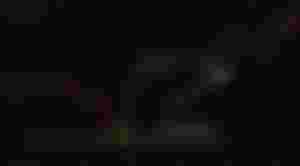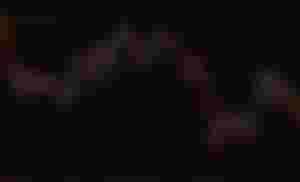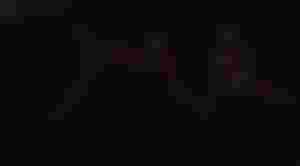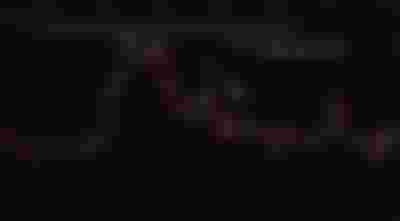No one can predict the future, so no one can say where the new trend will start or where it will end. There may be some traders who keep up with the trend before it even begins, but the question is the level of consistency.
How often? Maybe once or twice.
Normally, the trend begins even before traders see it. We do not always have to look at the market to make a profitable trade, all we have to do is find out if a new trend has started.
In this article, I will discuss how to identify the start of a new trend.
Moving average
This is the most common and very obvious thing traders use to see if there is a new trend, whether it is uptrend or downtrend.
The moving average is simple.
When the moving average and price action cross and the price goes above the moving average, there is a possibility of an uptrend.
When there is a crossover between the price and the moving average, and the price goes below the moving average, there is a possibility of a downtrend.

Another of the most common uses of moving average is the combination of two moving averages with a cross over.
So what's going on here?

Let's say for example, in the chart we put 50 EMA and 200 EMA, when we cross over between the two moving averages, and 50EMA surpasses the 200 EMA - it could be a sign of a trend changing from bearish to bullish.
Therefore, traders can say that this is a new trend, but not the beginning of a trend. But it's about to close.
Always remember, that moving average is a type of lagging indicator, You may not immediately see the start of a new trend, depending on the length of the moving average you will use.
Support and resistance levels
The price usually bounces when it hits a resistance level and support level. And when this happens, a new trend can also begin.

When the market is usually uptrend, we will see higher highs and higher low.
But once it hit a resistance level the price retracted and intersected the higher low and the price close below it.
This could be a sign of a possible trend reversal and the start of a new trend.

Whenin the downtrend market, it coconsists lower highs and lower lows. And once the lower high was intersected by the price and ended above it. We can say that this is a possible trend reversal and get ready for an uptrend.
Trend line breakout
One of the best ways to identify the possible end and start of a trend is to use the trendline.
This is where the trendline breakout comes in.

Whathappens here, we will draw an uptrend trendline if the market is up.
And when we break the trend line we draw the price closed under the trend line. Be ready, because this could be the end of the uptrend, and the downtrend is just beginning.

Same thing when in downtrend market, we will draw downward trendline and when the trend line breaks above it, this is a possible sign of a new trend.
The only problem with the trendline experienced by traders is this could be a subjective approach.
Because sometimes to know the overall market trends, we need to use multiple trends. This is what the fanning trendline calls it.
It means, we have short term trendline, intermediate trendline and long term trendline.
Now we have to buy what if we had a trendline before entering the trade. That I think is not that easy.
Failure test

It can only be used in the prolonged trend, meaning the market has been slowing down and downtrend and what we have been waiting for is exhaustion.
So how can this be identified?
Heavy
rewards
will take place on the weekly chart and pupush upwards slightly Heavy rejection will take place, with engulfs bear candlestick.
But then it will retrace again upwards, before continuing downhill.
Here we see the price exhaustion and the power loss of the bulls. And this is the time that we can enter a trade, and put a short position.
The example image I used above, is not from any cryptocurrency chart.
This is the chart of Edesa Biotech Inc from Stock market. I have no idea, what kind of company this is.
I just used it as an example in the failure test. Because this situation occurs in all Cryptocurrency markets, forex, stocks, futures, etc.
The image we see above is Edesa's weekly chart. We see how it went up, and it reached $ 800 per share in 2013. It's all time high.
However, several times it attempted to break or regain all time high but this never happened. Due to the strength of the rejection.
I can say that this is one of the good examples of failure tests, due to exhaustion on the bulls side. And it has never recovered. Its price is only playing at $ 3 per share.
There are many other ways to identify if there is a new trend. There are indicators like MACD, RSI, Stochastic etc.
But most of these indicators are subjective, so we need more confirmation from price action, to make our assumption stronger. And we can make sure that we have an edge. Before we decide to enter a trade. Remember always trade what you see not what you think.







lovely and Enlightenening Article